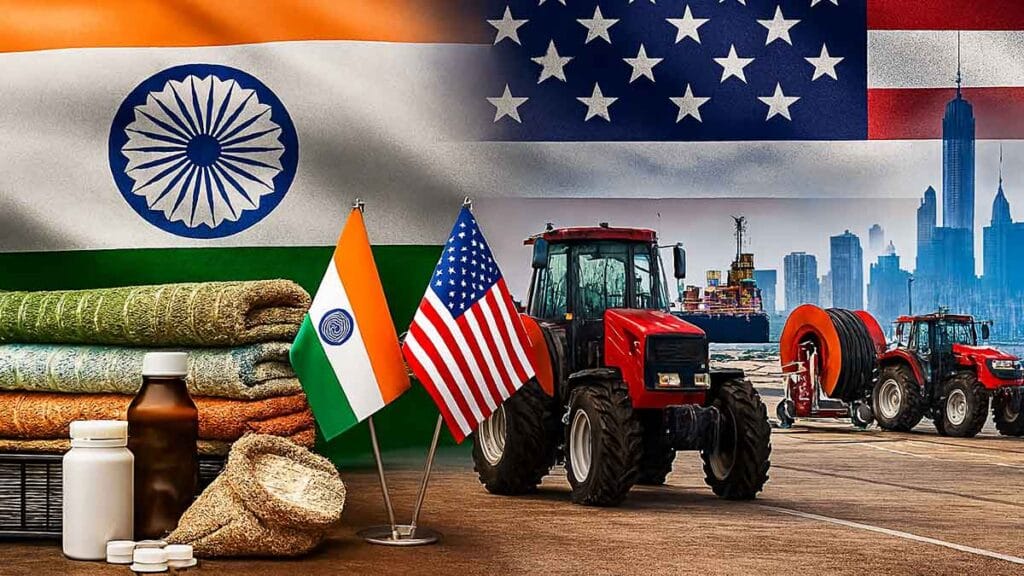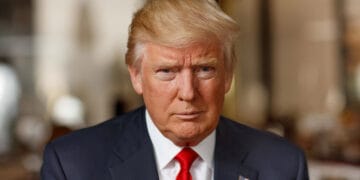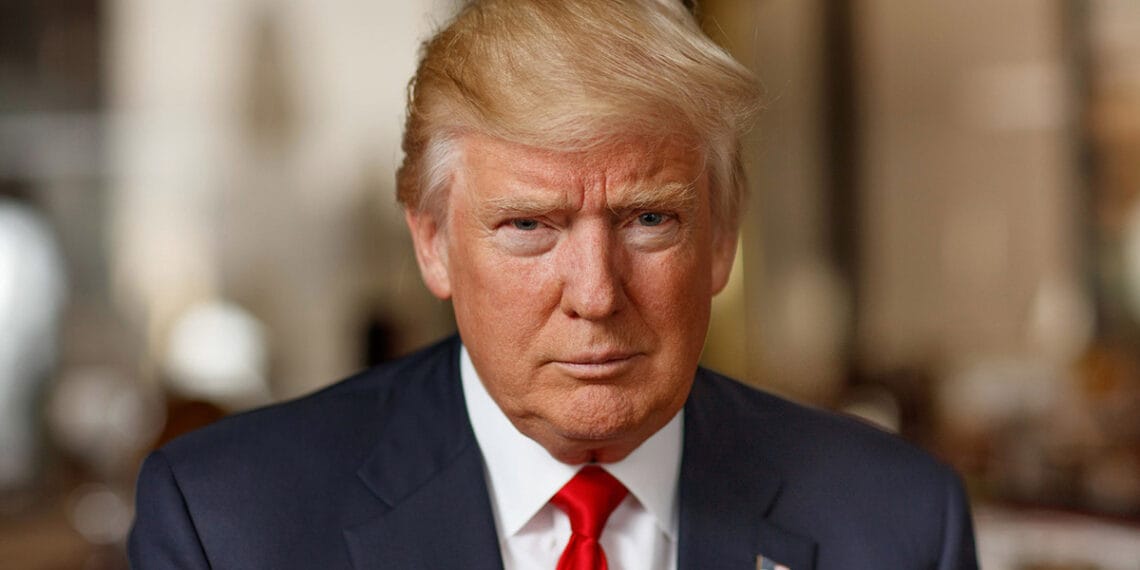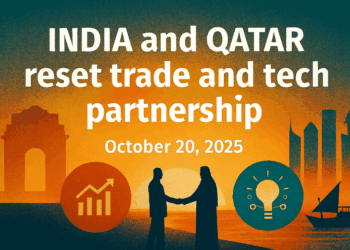
Gyeongju, South Korea — In a significant development for India’s trade diplomacy, US President Donald Trump announced at the APEC CEOs Luncheon that a bilateral trade agreement with India is “coming soon.” The statement, delivered on October 28, 2025, has sparked cautious optimism among Indian exporters, who have been grappling with a 50% tariff burden imposed by the United States earlier this year. The prospect of a trade deal offers hope for tariff relief, improved market access, and a more stable economic partnership between the two nations.
India and the United States have long maintained a complex trade relationship, marked by cooperation in strategic sectors and friction over tariffs and market access. In August 2025, the US imposed steep tariffs—up to 50%—on a range of Indian goods, citing concerns over energy imports from Russia and trade imbalances. The move triggered a 12% decline in Indian exports to the US in September, particularly affecting sectors like textiles, pharmaceuticals, and engineering goods.
While India has diversified its export markets in response—boosting shipments to Europe, Africa, and Southeast Asia—the US remains a critical destination, accounting for nearly 17% of India’s total merchandise exports. The announcement by President Trump signals a potential turning point, with both sides reportedly converging on most trade issues and entering the legal drafting phase of negotiations.
The proposed bilateral trade agreement (BTA) is expected to address key concerns around tariff reduction, non-tariff barriers, and regulatory harmonization. For Indian exporters, even a partial rollback of duties—from 50% to a residual rate of 15%—would restore competitiveness in the US market and revive stalled supply chains.
Pharmaceutical companies, which have faced pricing pressure due to tariff hikes, could regain momentum. Similarly, textile manufacturers in Tamil Nadu, Gujarat, and Rajasthan—who rely heavily on US orders—stand to benefit from improved margins and renewed buyer interest. The IT services sector, which contributes significantly to India’s export earnings, may also gain from streamlined visa and compliance protocols under the new agreement.
However, trade experts caution against premature celebration. President Trump’s approach to trade has historically been transactional, with tariffs often used as leverage in geopolitical negotiations. The unpredictability of his policy stance means that even after a deal is signed, the threat of tariff reversals may persist.
India–US Trade Snapshot
| Sector | 2024–25 Export Value (USD) | Tariff Impact | Projected Recovery (Post-Deal) |
|---|---|---|---|
| Textiles & Apparel | $8.2 billion | -18% | +25% |
| Pharmaceuticals | $6.5 billion | -12% | +20% |
| Engineering Goods | $10.1 billion | -15% | +22% |
| IT Services | $18.4 billion | -5% | +10% |
Dr. Rakesh Mohan, former Deputy Governor of the Reserve Bank of India, noted, “A trade deal with the US is not just about tariffs. It’s about restoring trust and predictability in our economic engagement. The current uncertainty has hurt investor sentiment and disrupted long-term contracts.”
Commerce Ministry officials, speaking on condition of anonymity, confirmed that negotiations are in the final stages, with most contentious issues resolved. “We are now working on the legal text. The goal is to create a framework that is fair, reciprocal, and future-proof,” one official said.
US-based trade analyst Jennifer McCarthy added, “India has shown remarkable resilience by diversifying its export markets. But the US remains irreplaceable in terms of scale and value. A deal would benefit both sides, especially in sectors like clean energy, digital services, and agri-tech.”
If finalized, the India–US trade deal could serve as a model for other bilateral agreements, including those with the EU and Canada. It would also strengthen India’s position in global trade forums, allowing it to push back against protectionist measures and advocate for equitable market access.
Challenges remain, particularly around enforcement mechanisms, dispute resolution, and political optics. With the US presidential election cycle approaching, any delay or reversal could derail progress. India, meanwhile, must ensure that domestic industries are prepared to meet compliance standards and scale production to meet renewed demand.
The government is expected to announce support measures for affected sectors, including export credit guarantees, logistics subsidies, and digital onboarding for MSMEs. These steps will be crucial in translating the trade deal into tangible economic gains.
The announcement by President Trump has injected fresh momentum into India–US trade negotiations. For Indian exporters, the prospect of tariff relief and improved market access offers a lifeline after months of uncertainty. While the path ahead may be complex, the convergence of interests and the urgency of economic recovery make a bilateral trade agreement not just desirable—but necessary.
As both nations move toward finalizing the deal, stakeholders across industry, policy, and diplomacy must work in tandem to ensure that the agreement delivers on its promise: a stable, equitable, and forward-looking trade partnership that benefits businesses and consumers on both sides of the Pacific.



















